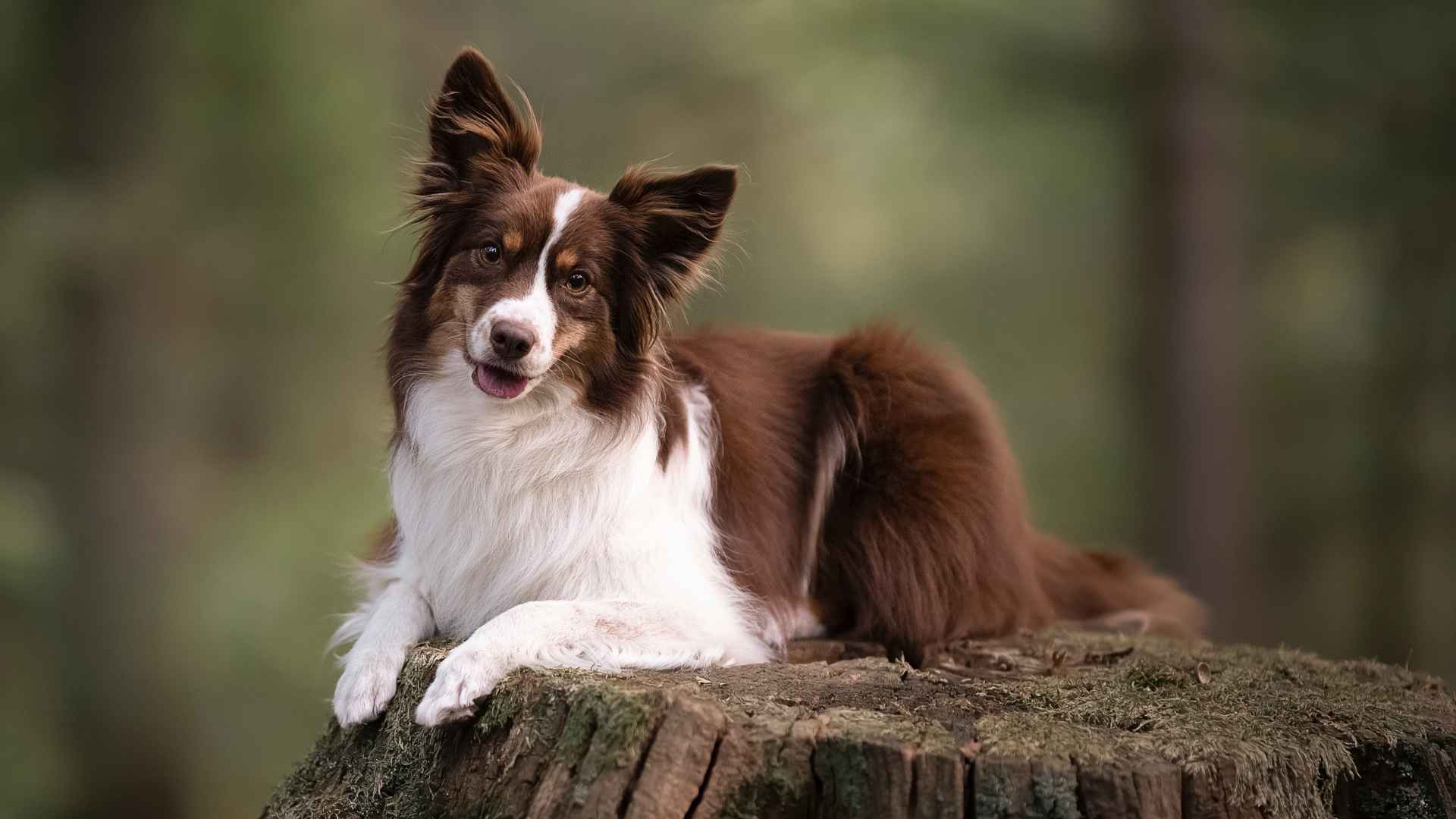In today’s fast-paced world, everything from technology to fashion is evolving — and so are our furry companions! Welcome to the world of modern dog breeds: a blend of designer genetics, adaptive temperaments, and Instagram-ready charm.
New breeds are recognized by the AKC every year through a thorough and structured registration process. These aren’t your average backyard barkers; they’re tailor-made to fit contemporary lifestyles, urban apartments, and even your favorite coffee shop aesthetic. Modern dog breeds are turning heads and winning hearts.
They’re smart, stylish, and often bred to combine the best traits of multiple purebreds. Looking for a pet that vibes with your minimalist living space, thrives on love and low drama, and doubles as a selfie partner? These modern marvels are more than pets — they’re companions for the modern age.
Today, we’ll introduce you to the coolest, most adaptable modern dog breeds and help you find the one that fits perfectly with your lifestyle. Ready to meet the next-gen pups?
Modern Dog Breeds
1. Rat Terrier
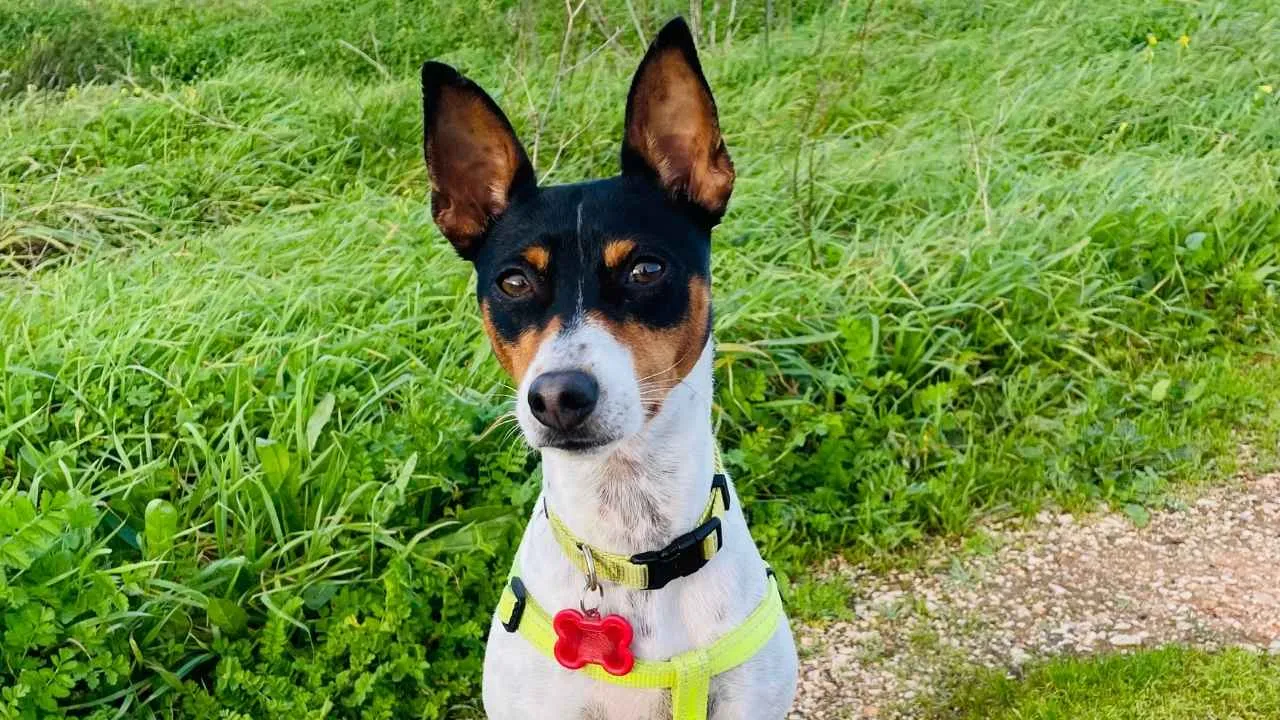
Despite their name sounding like a rodent-themed superhero sidekick, the Rat Terrier is the main character when it comes to all-purpose farm dogs.
Rat Terriers come in two conveniently compact sizes: the miniature variety, which stands 10 to 13 inches tall, and the standard size, ranging from 13 to 18 inches. They typically enjoy a long lifespan of about 12 to 18 years.
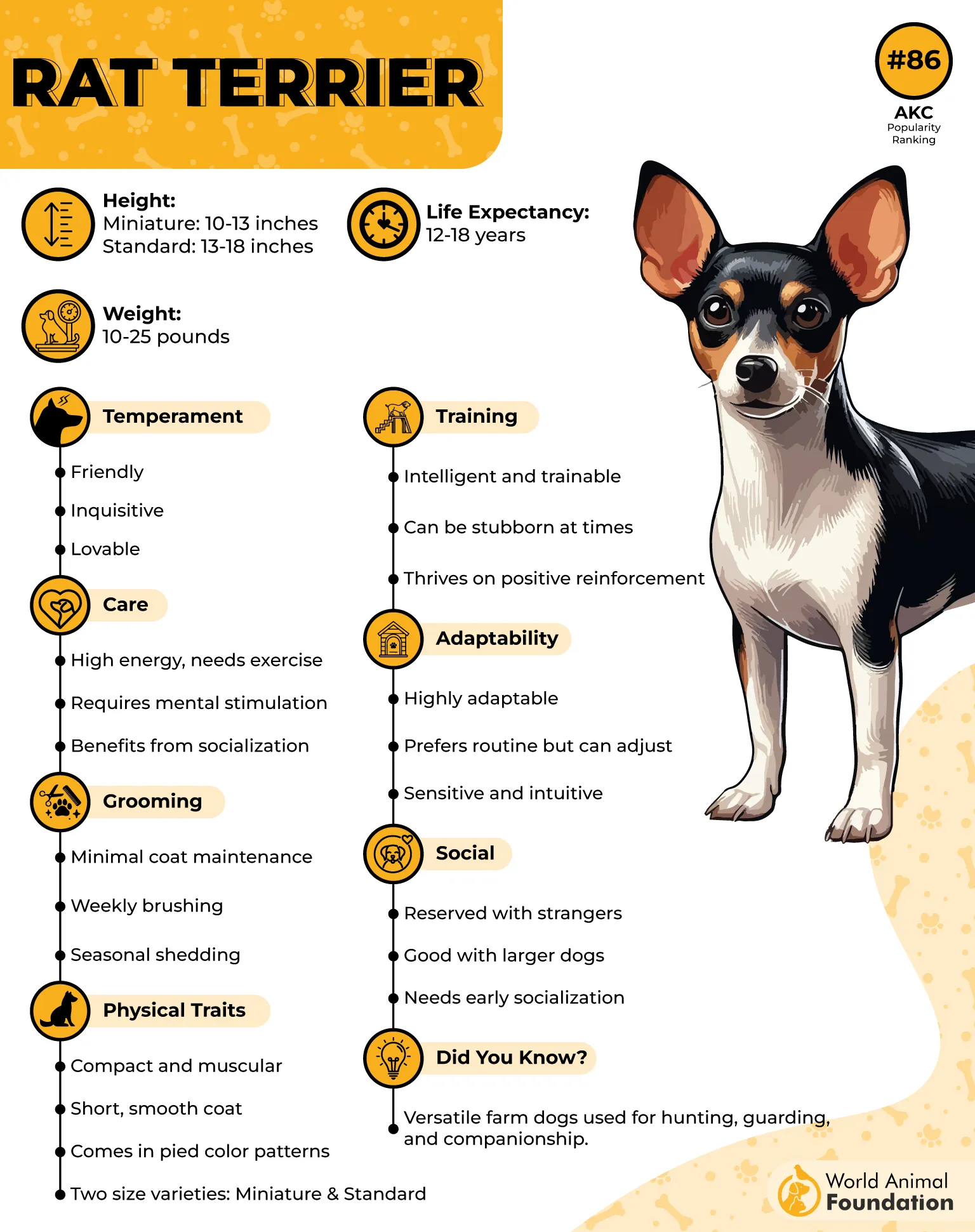
Don’t let their small size fool you—these compact dynamos were bred to handle rodents like furry little ninjas. If there’s a rat, mouse, or anything even thinking about scurrying, this pup’s already on it. Swift. Silent. Serious.
But it’s not all work and no play—Rat Terriers are also affectionate, loyal, and hilariously expressive. With their perky ears and “Did you just say walk?” eyebrows, they’ll keep you giggling even when they’re not busting rodents like it’s a Quentin Tarantino film.
As per PetMD, Rat Terriers aren’t usually excessive barkers, but if they’re feeling bored or lonely, they might voice their feelings to get your attention.
Thanks to their short, dense coat, Rat Terriers are pretty low-maintenance when it comes to grooming. However, they do shed moderately year-round, with more noticeable shedding during the spring and fall seasons.
They’re agile, smart, and fast enough to make your Wi-Fi jealous. They thrive in active homes, love to dig (you’ve been warned, gardeners), and form deep bonds with their humans. Basically, they’re the canine version of a best friend with a strong moral compass and a suspicious amount of energy.
2. Coton de Tulear
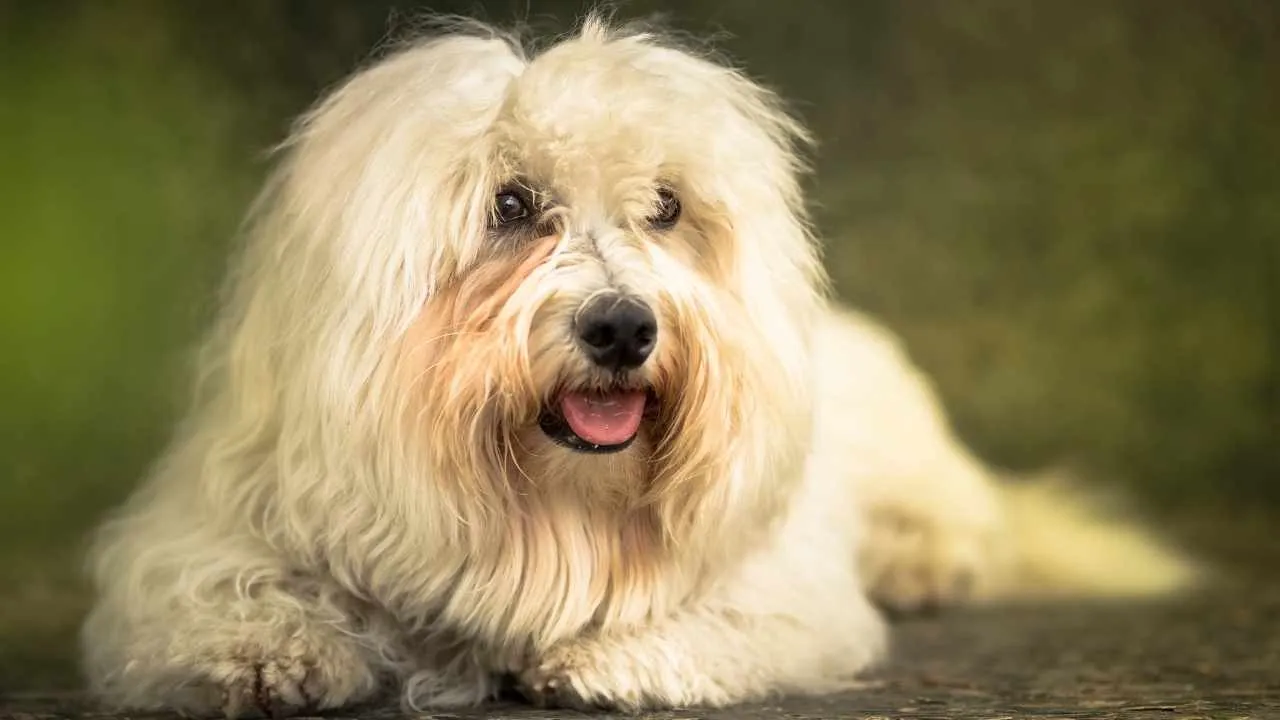
Just try to say Coton de Tulear (co-TOHN day TOO-lay-ahr) without feeling fancy. Go ahead, we’ll wait.
This breed hails from Madagascar—yes, the island with the dancing lemurs—and was once the companion of Malagasy royalty. Today? They’re still royally cute, with a personality that could charm the slippers off a sultan.
Famous for its soft, cotton-like coat, the Coton de Tuléar usually weighs no more than 18 pounds. While predominantly white, their fur may also feature touches of gray, tan, black, or even tri-colored markings.
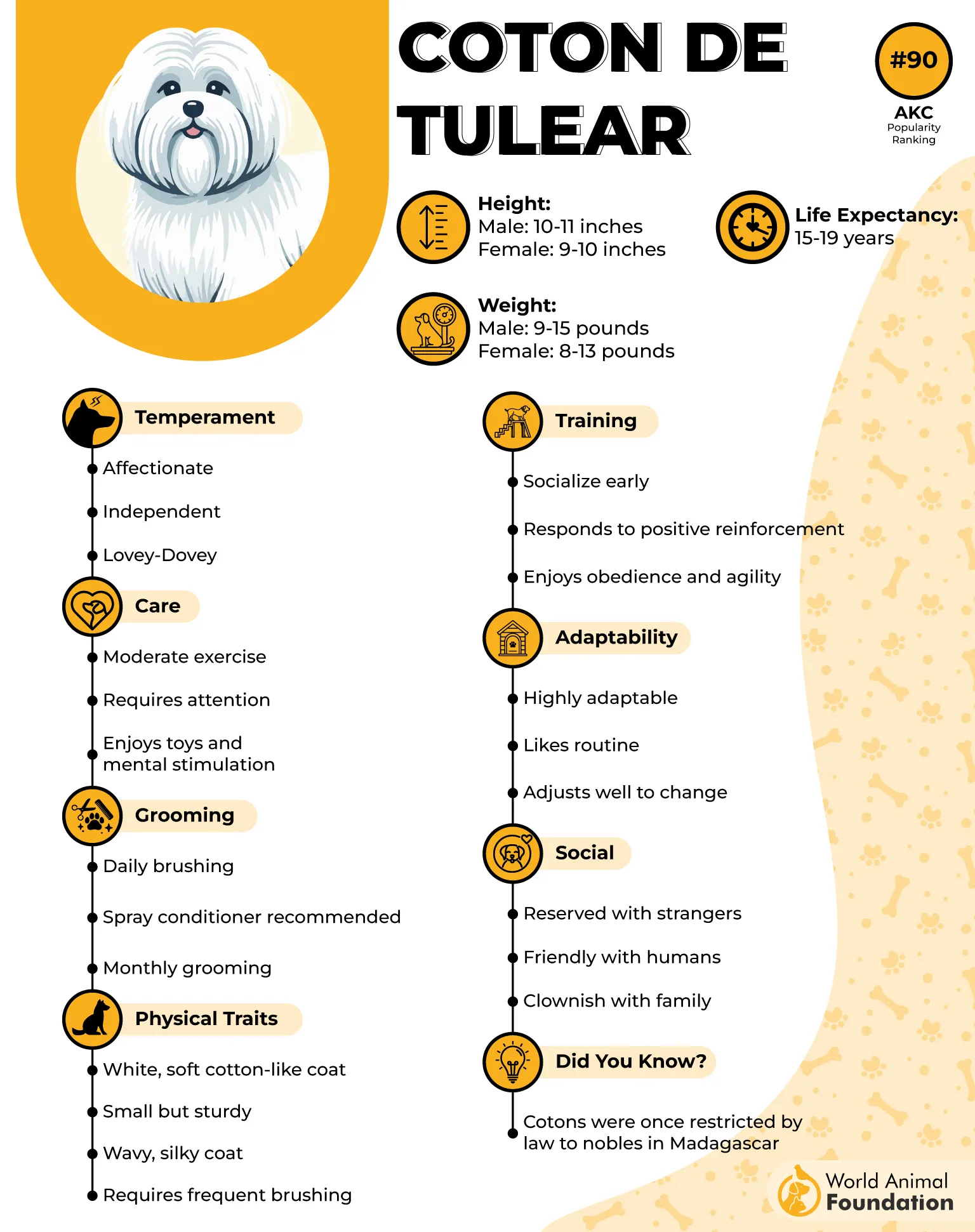
The Coton is the epitome of fluff and fun. These little dogs are known for their comical antics, “smiling” expressions, and ability to walk on their hind legs like a circus performer who accidentally became your dog. They’re extremely people-oriented, so don’t be surprised if they follow you around like a tiny, giggling shadow.
Cotons are charming little entertainers, often known for their adorable habit of jumping up and walking on their hind legs just to delight their humans.
They’re social butterflies—most Cotons enjoy meeting new people and are naturally curious about unfamiliar surroundings. The playful dogs can indeed be great therapy dogs. Their cheerful and gentle temperament, along with their compact size, makes them ideal for providing comfort in therapeutic environments.
Training them is usually a breeze, thanks to their eagerness to please. Whether it’s swimming, running, or playing, Cotons are always up for some fun.
According to Wikipedia, they adjust well to just about any living situation, but one quirky trait stands out: they tend to become especially lively in the evenings—think of it as their own little “Coton happy hour”!
Great for allergy-sensitive owners (thanks to that low-shedding coat), Cotons are gentle with kids, polite with guests, and dramatic enough to make even your cat raise an eyebrow. Just be sure to keep up with grooming—they may look like a powder puff, but they do need regular brushing to avoid turning into a walking tumbleweed.
3. Pumi
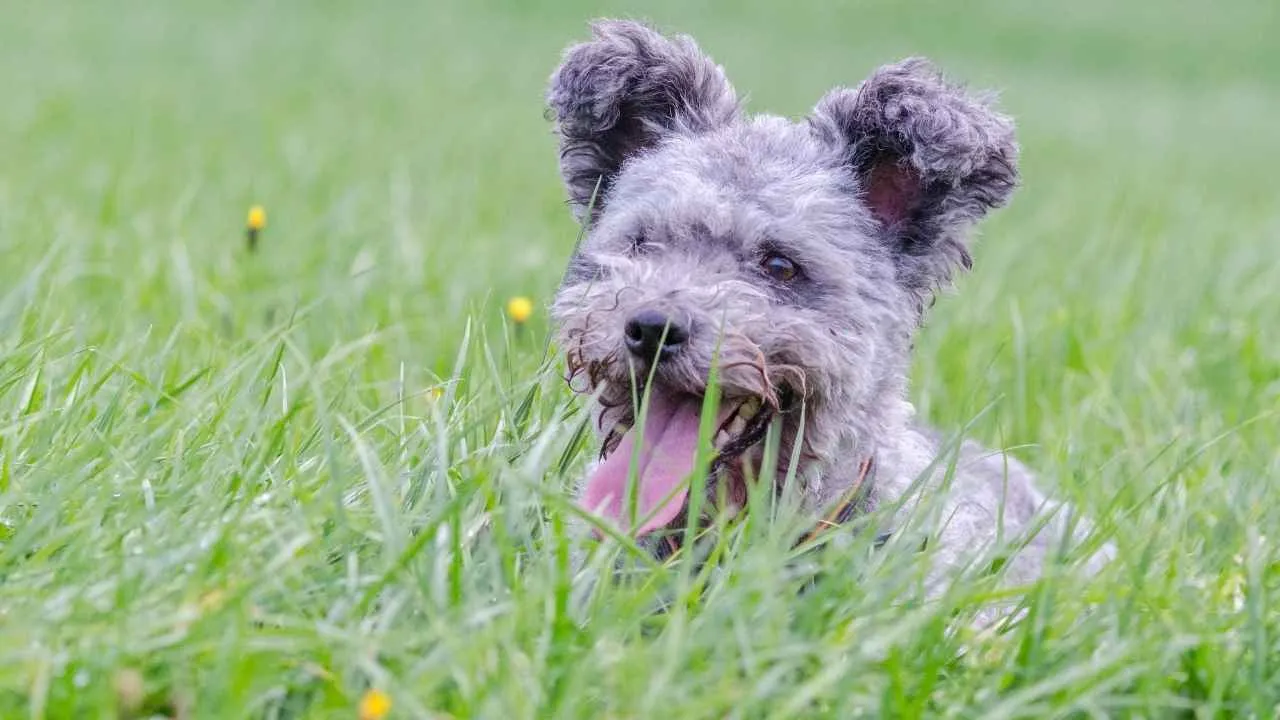
Ever seen a dog that looks like it has Bluetooth speakers for ears and the attitude of a seasoned farm supervisor? Meet the Pumi (pronounced POO-mee), Hungary’s answer to the question, “What if a sheepdog had opinions?”
The Pumi is the middle child of the Hungarian sheepdogs—older than the spunky Puli, sassier than the reserved Komondor, and basically born with a resume. Bred specifically for herding, these dogs are smart, independent, and—let’s be real—a little bossy. But hey, when your job is telling sheep (and sometimes people) what to do, a bit of attitude is essential.
When fully grown, the Pumi typically stands between 15 and 18.5 inches tall and weighs anywhere from 22 to 29 pounds. With its curly coat, dark, expressive eyes, and signature semi-erect ears, the Hungarian Pumi has an undeniable teddy bear charm that’s hard to resist.

With their springy corkscrew curls, alert expression, and “I run this ranch” vibe, the Pumi is more than just a pretty face. They’re natural problem-solvers who love having a task, whether it’s rounding up livestock or relocating every toy in the house to one exact corner (usually your bed).
These dogs thrive when they have a strong working bond with their pet parent. However, as Levy points out, this close attachment can sometimes result in separation anxiety.
Energetic and witty, the Pumi isn’t for couch potatoes—but if you want a partner in crime for agility courses, obedience, or just chasing dreams (and squirrels), this floof’s got your back.
4. Biewer Terrier
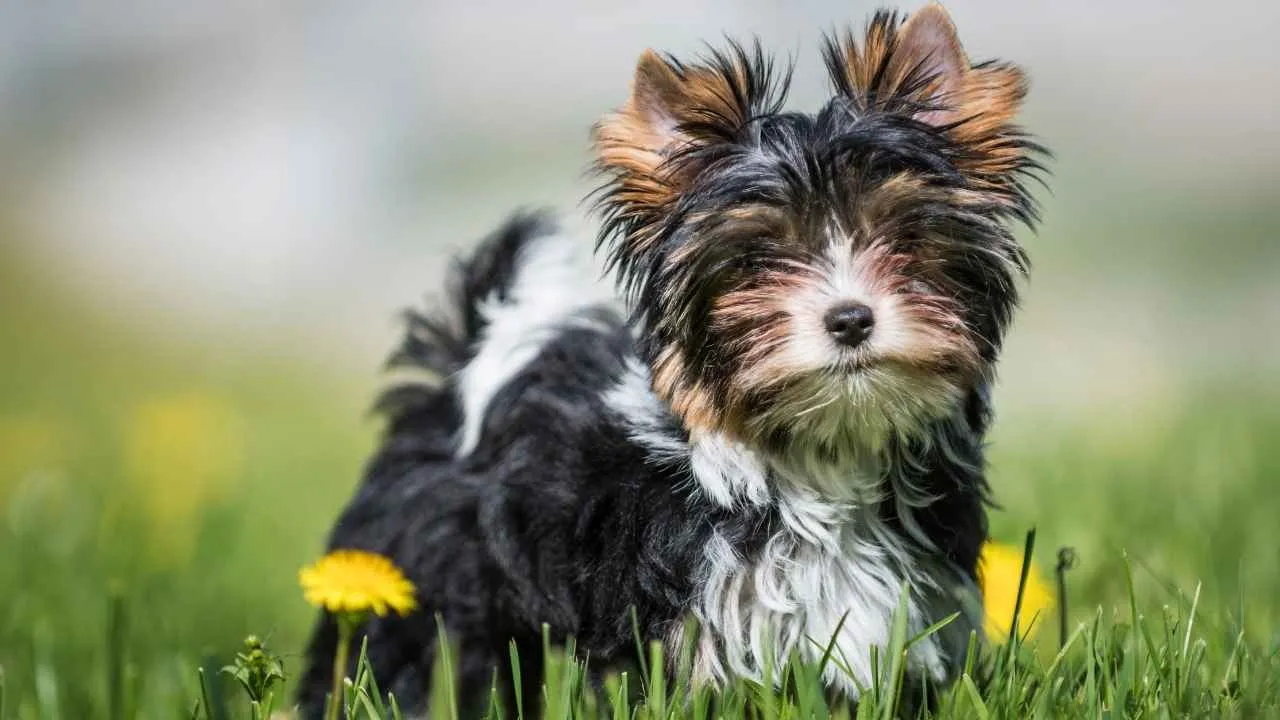
If you’ve ever wanted a dog that looks like it belongs on the red carpet and in your lap, say hello to the Biewer Terrier (pronounced “Beaver,” yes, really). Born to be a companion, this breed redefines what it means to be a terrier—and does it with a bow on top.
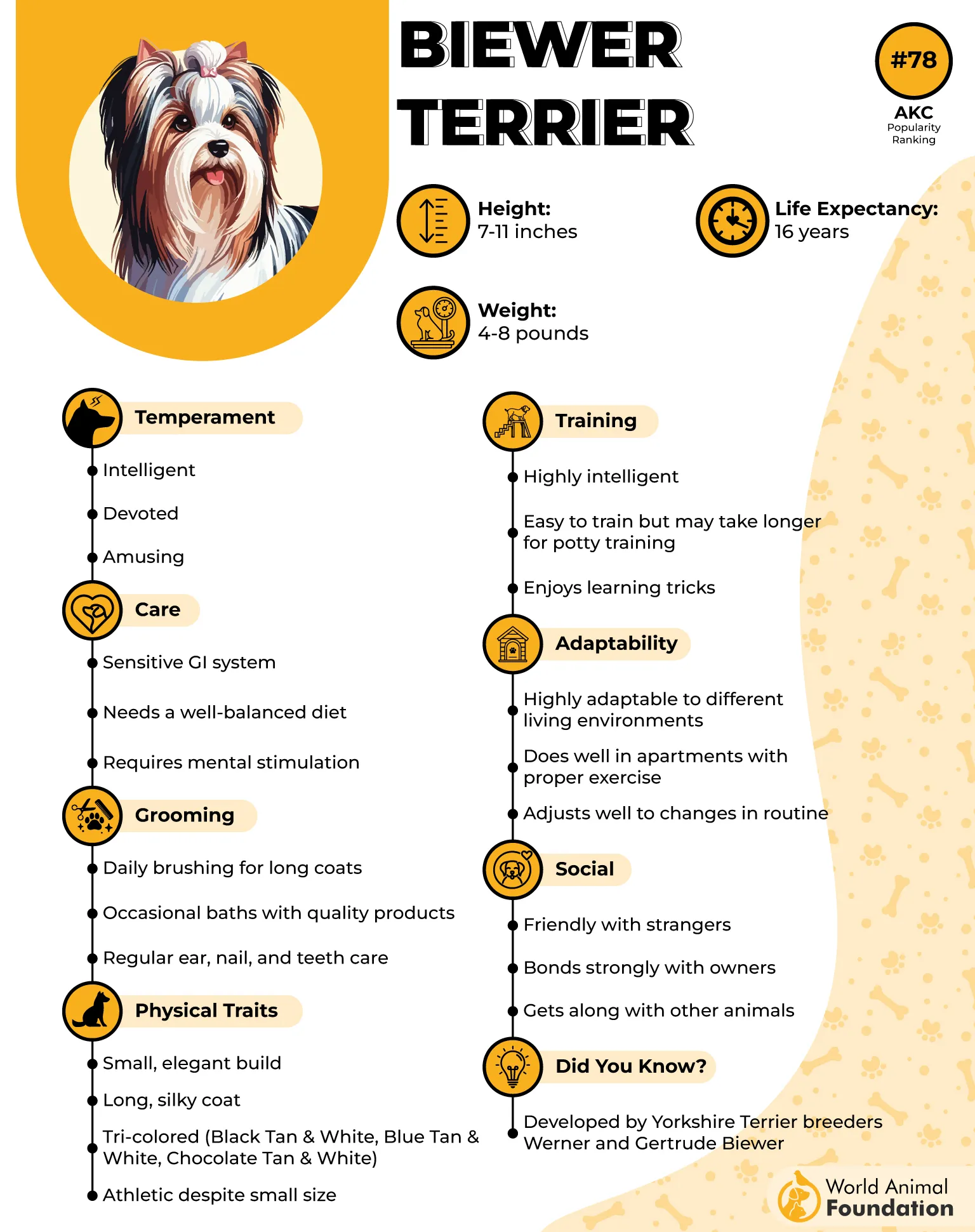
The Biewer Terrier is a petite pup, usually weighing between 4 and 8 pounds and standing around 7 to 11 inches tall at the shoulder when fully grown. They enjoy a fairly long lifespan, typically living 12 to 15 years, and sometimes even longer with good care and a little pampering!
According to the American Kennel Club (AKC), the Biewer is quick to alert you when someone’s at the door, but isn’t the type to bark nonstop.
Unlike the typical terrier (read: scrappy and slightly chaotic), the Biewer is gentle, cheerful, and obsessed with winning hearts. Think of them as the extrovert at the party who hugs everyone and leaves glitter in their wake. They live for attention and aren’t shy about making sure you know it. And everyone else within a five-mile radius.
With a silky coat that looks like it’s been flat-ironed by a professional stylist and a trot that could easily score a modeling contract, Biewers are the full package: brains, beauty, and bark.
While a Biewer’s small size makes them perfect for apartment living, they still need regular chances to burn off their boundless energy. Although they’re lively, Biewers don’t have super high energy levels and don’t require intense exercise. A daily walk combined with some playtime is usually enough to keep them happy and content.
But don’t let the fluff fool you—these little charmers are as intelligent as they are adorable and can be trained to perform tricks, carry handbags (emotionally), or simply be the center of your universe.
5. Mudi
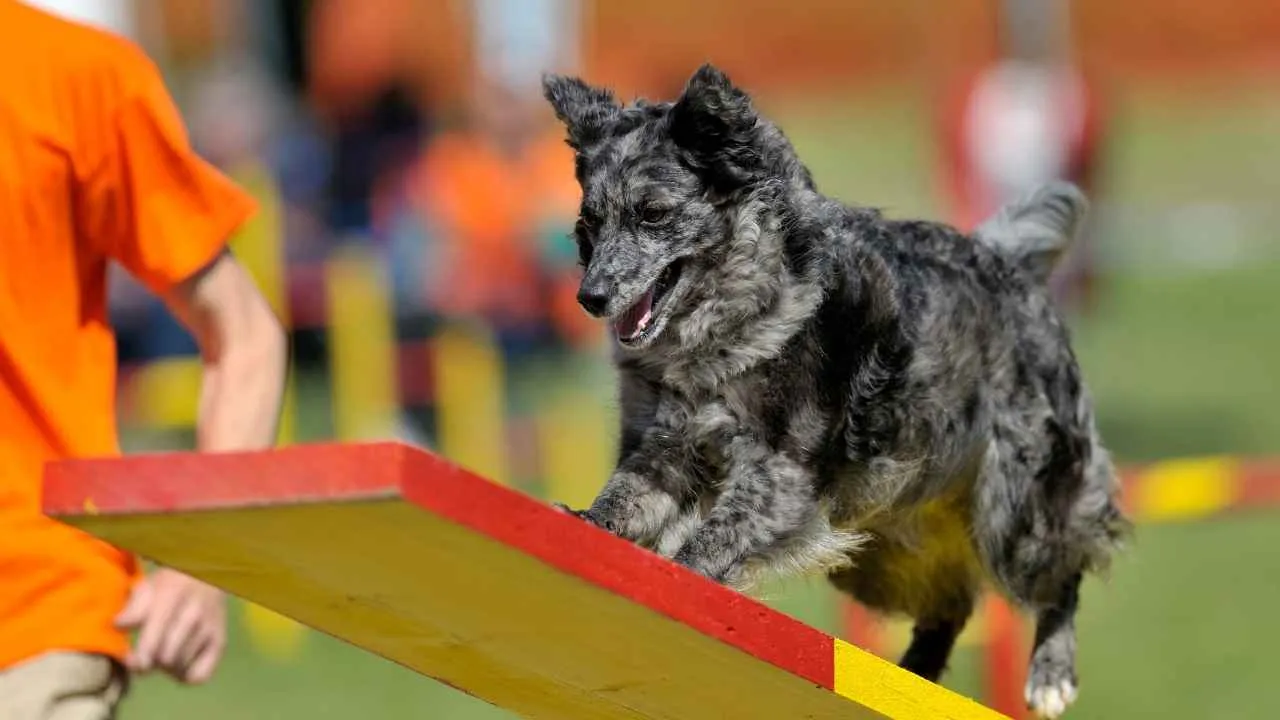
Say hello to the Mudi (pronounced “Moody”—but don’t worry, their vibe is all sunshine and go-go-go). One of the three Hungarian sheepdogs, this curly-coated dynamo is basically a workaholic with a fun side hustle in parkour.
The Mudi is a medium-sized breed, standing between 15 and 18.5 inches tall and weighing 18 to 29 pounds. They’re known for their distinctive wedge-shaped head and almond-shaped eyes. Fun fact: Mudi puppies can be born with either a long tail or a natural bobtail!
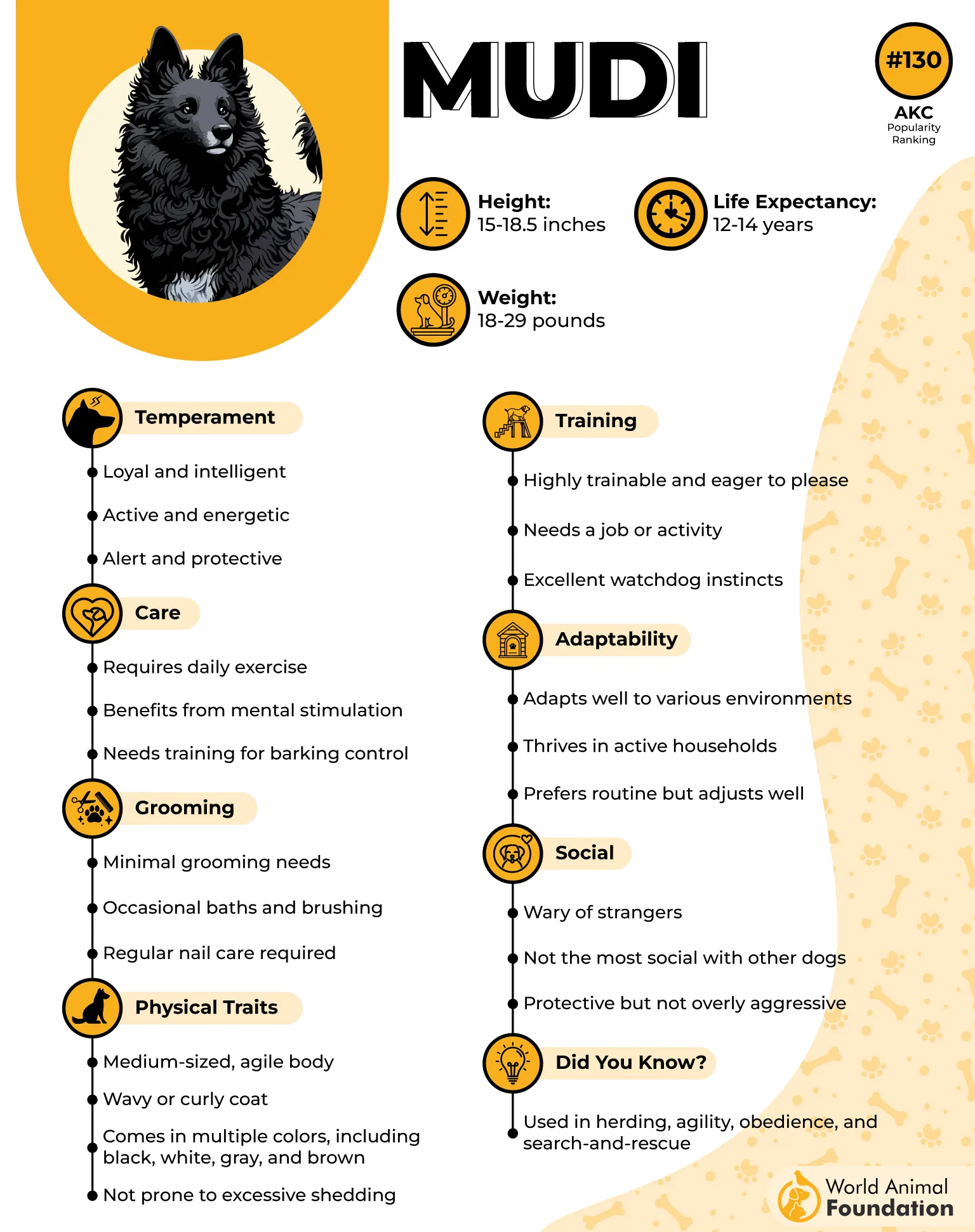
Though smaller than their cousins (the Puli and Pumi), the Mudi doesn’t seem to have received the memo. They’re all in—chasing livestock, running laps around your yard, inventing new ways to climb furniture, and offering their vocal opinions on everything.
Mudis tend to be a bit more reserved around strangers or unfamiliar dogs, though some can be quite friendly and quick to welcome new faces.
Plan to dedicate at least one to two hours daily to exercise, mental challenges, and training games for your Mudi. Since this dog is a highly intelligent breed, it’s best to keep activities varied and avoid too much repetition to keep them engaged and happy.
Smart, loyal, and spirited, the Mudi is the kind of dog who takes their job seriously—but will still wag their whole butt when you say “walkies.” They’re not for couch potatoes, but if your lifestyle is “organized chaos,” you’re in for a lifelong adventure buddy.
The Mudi’s unique personality and training needs might not always align with what experienced dog owners expect, which can sometimes lead to frustration. It’s a good idea to thoroughly research the breed before bringing home a Mudi puppy or adult dog from a breeder.
6. Berger Picard
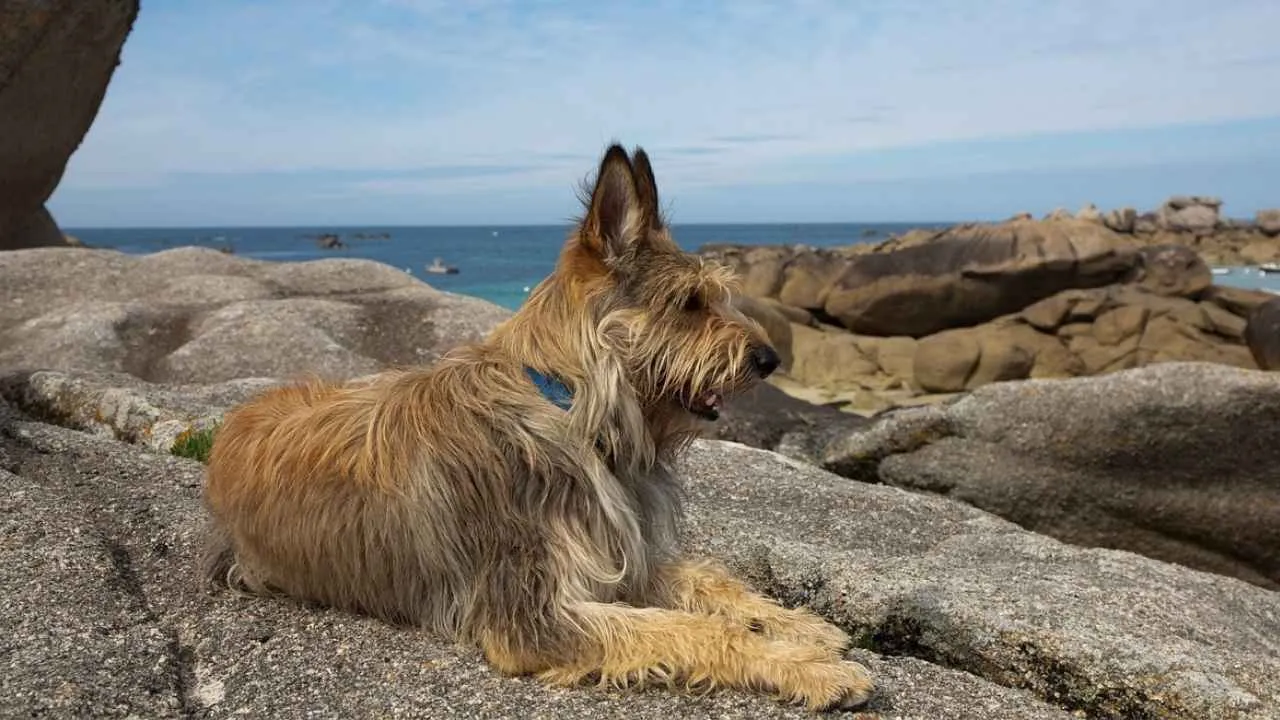
The Berger Picard (pronounced bare-ZHAY pee-CAR) may look like it just rolled out of bed five minutes before its shift, but don’t let the scruffy charm fool you—this dog means business.
A herder by trade and heart, the Berger Picard is fiercely focused, highly independent, and fiercely protective of their people. They’re the type who’ll patrol the yard like it’s an international border and treat squirrels like unauthorized guests.
Their long legs, strong muscles, and abundant energy equip them perfectly to handle the physical demands of their work. Plus, their sharp intelligence and keen sensitivity make them excellent partners for both people and farm animals.
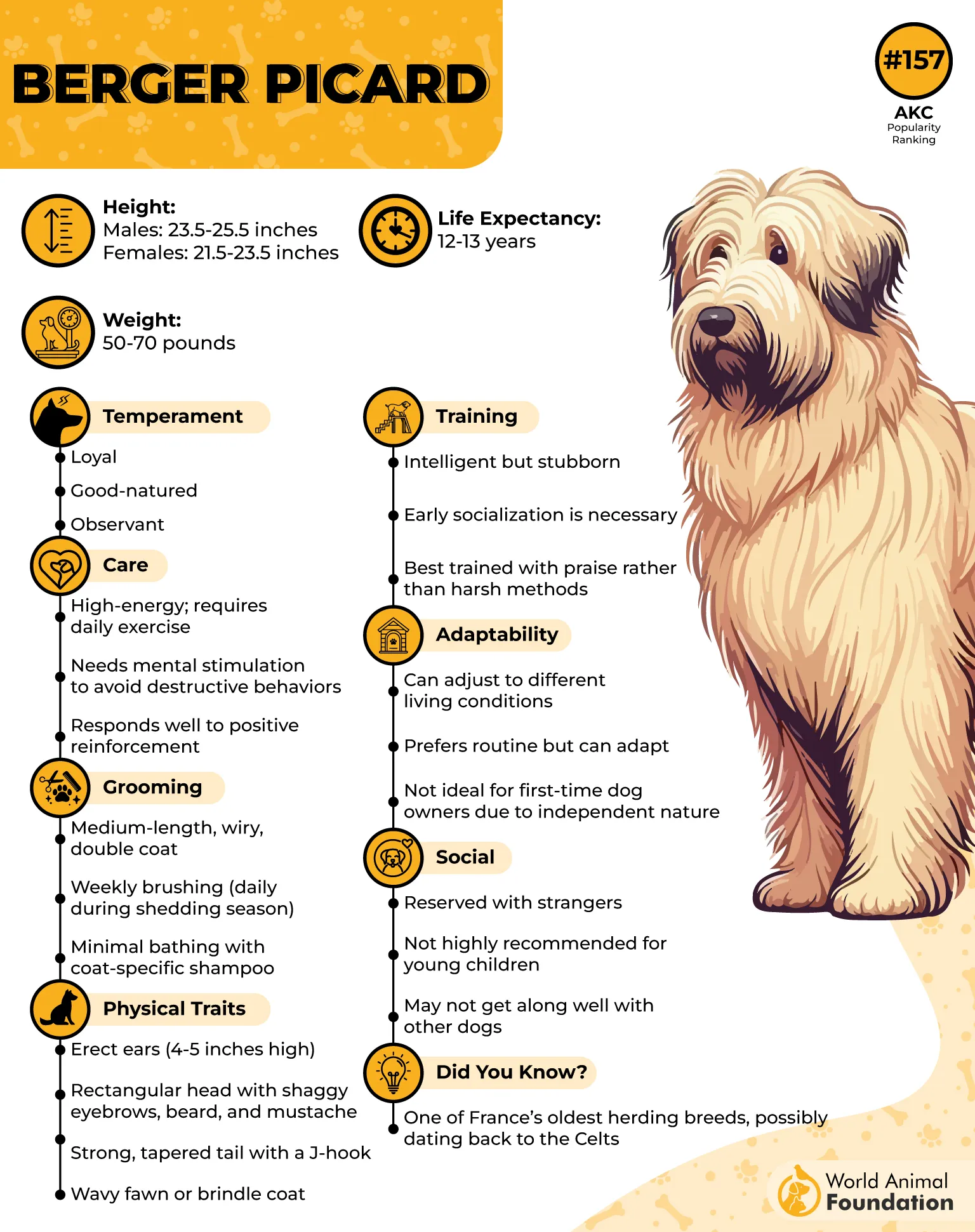
Thanks to their weatherproof coats and athletic builds, they thrive in outdoor jobs and adventures. Rain, snow, or “someone left the hose on again”—the Picard is built to handle it.
Like many working breeds, Berger Picards have relatively low grooming needs. Their distinctive wiry coat requires just occasional brushing throughout most of the year, with a bit more regular care in spring and summer to manage shedding of the undercoat.
Just be ready to earn their trust; these are not your instant best-friend dogs. They’re the slow-burn loyalty types—the ones that stick around long after the trend has passed.
Bonus: their charmingly messy hair makes them look like a rockstar who just finished a sheep-herding world tour.
7. Boerboel
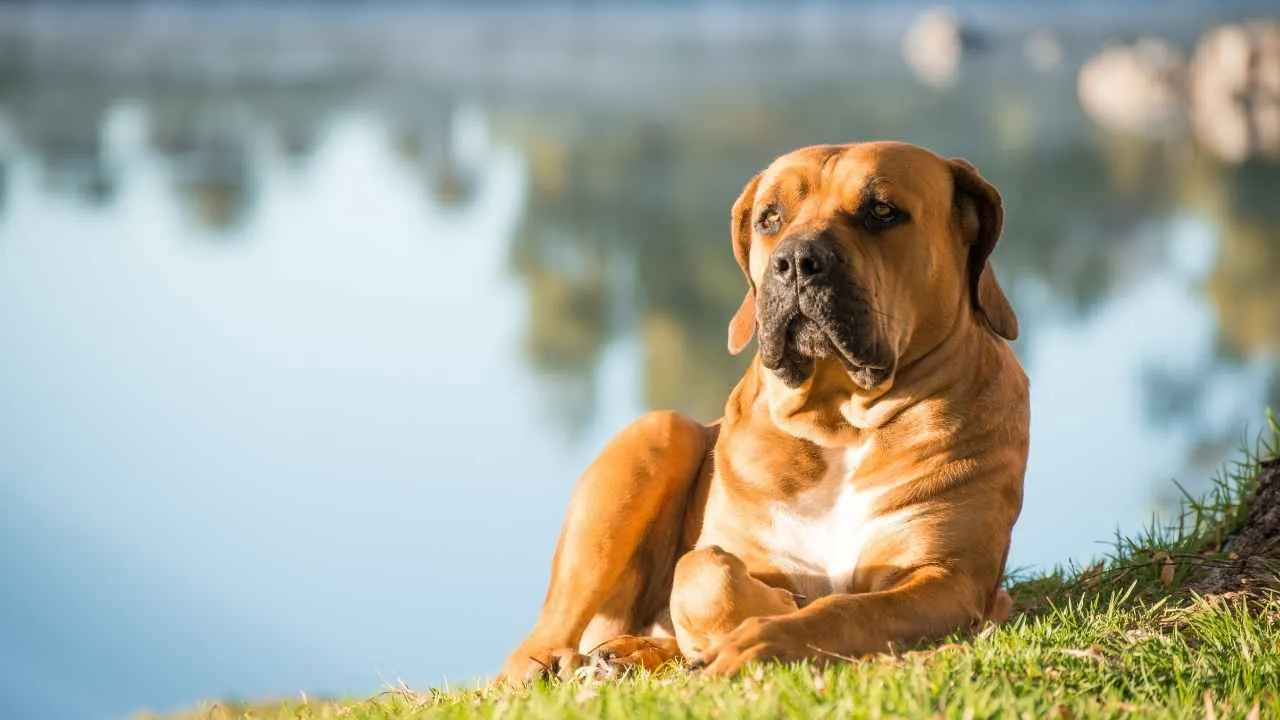
- Big. Bold. Boerboel.
This South African guardian breed was bred to protect homesteads from everything from wild animals to unwanted visitors—and when we say “protect,” we mean with quiet confidence and jaws of justice.
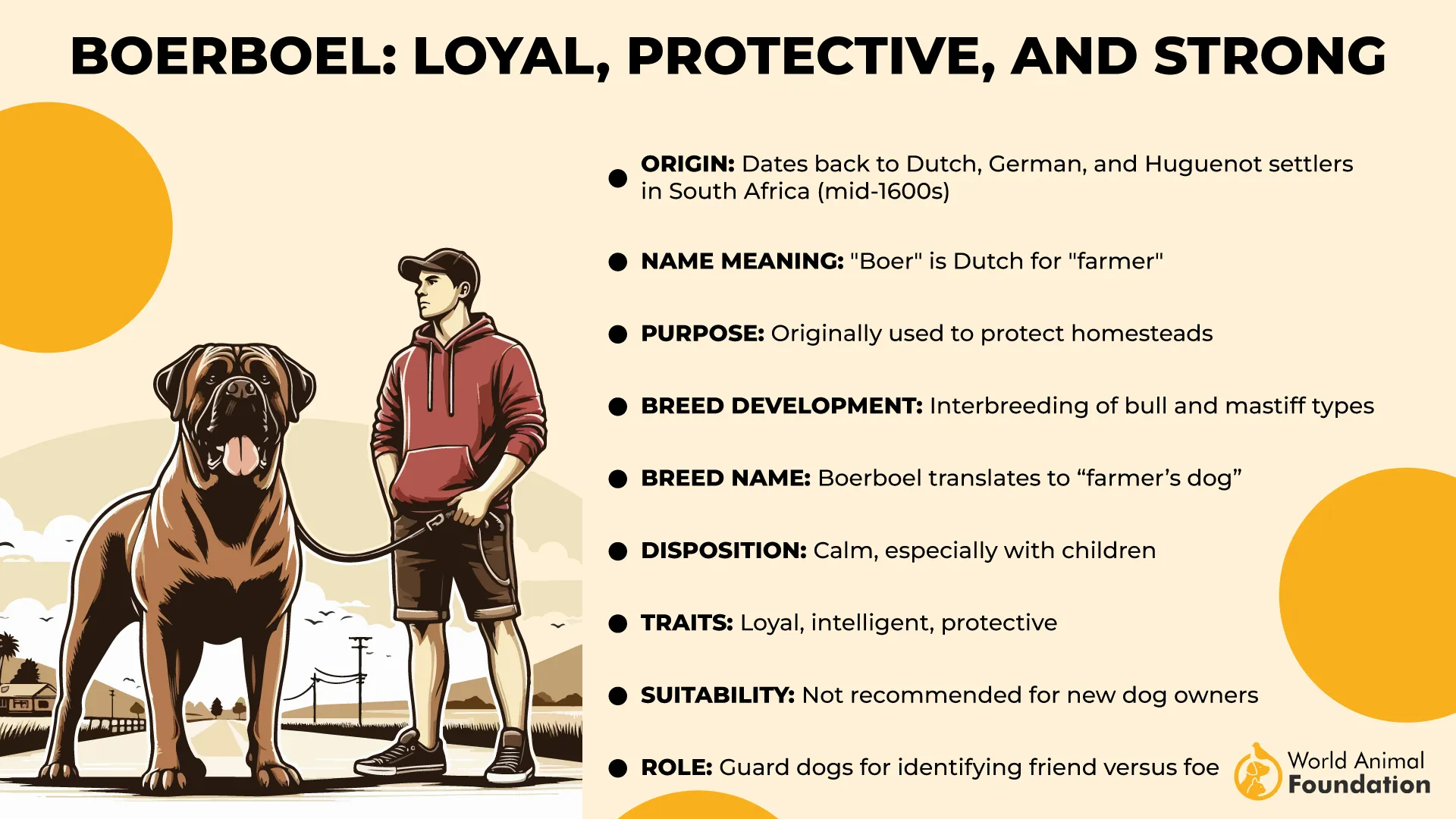
Boerboels (pronounced “boo-er-bulls”) are massive, muscular, and impressively composed. They don’t start drama, but they will end it. With proper training and early socialization (and we mean early, folks), they grow into affectionate, reliable family protectors who are equal parts cuddle bug and security detail.
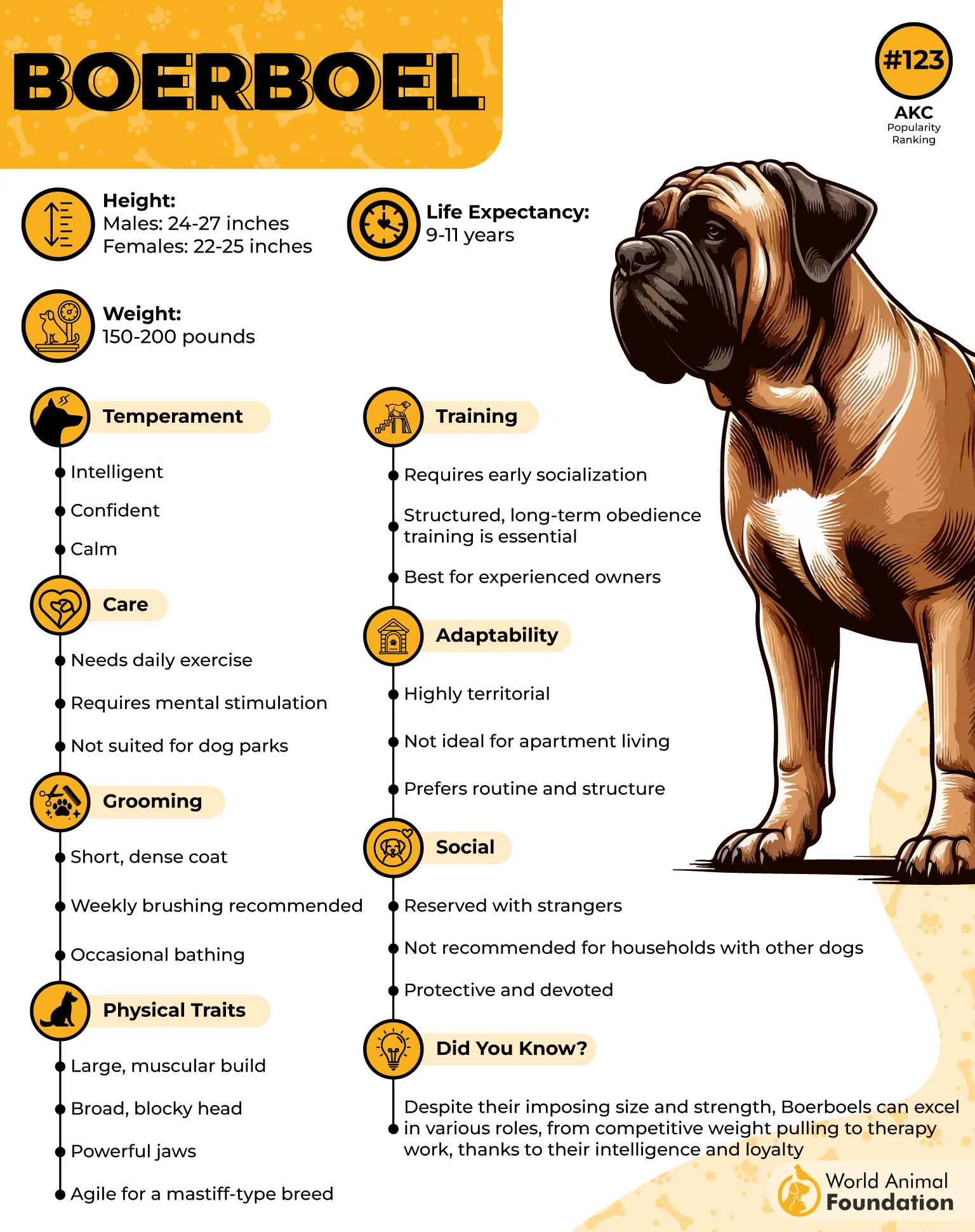
That said, this big dog breed is not for beginners. They need a confident, experienced handler who can lead with firm fairness, not force. Otherwise, they might take the reins themselves… and your sofa, too.
Despite their size and serious look, they’re gentle with loved ones, especially kids, and deeply loyal companions. Think of them as the guard dog who secretly watches Disney movies and sobs at The Lion King.
8. Miniature American Shepherd
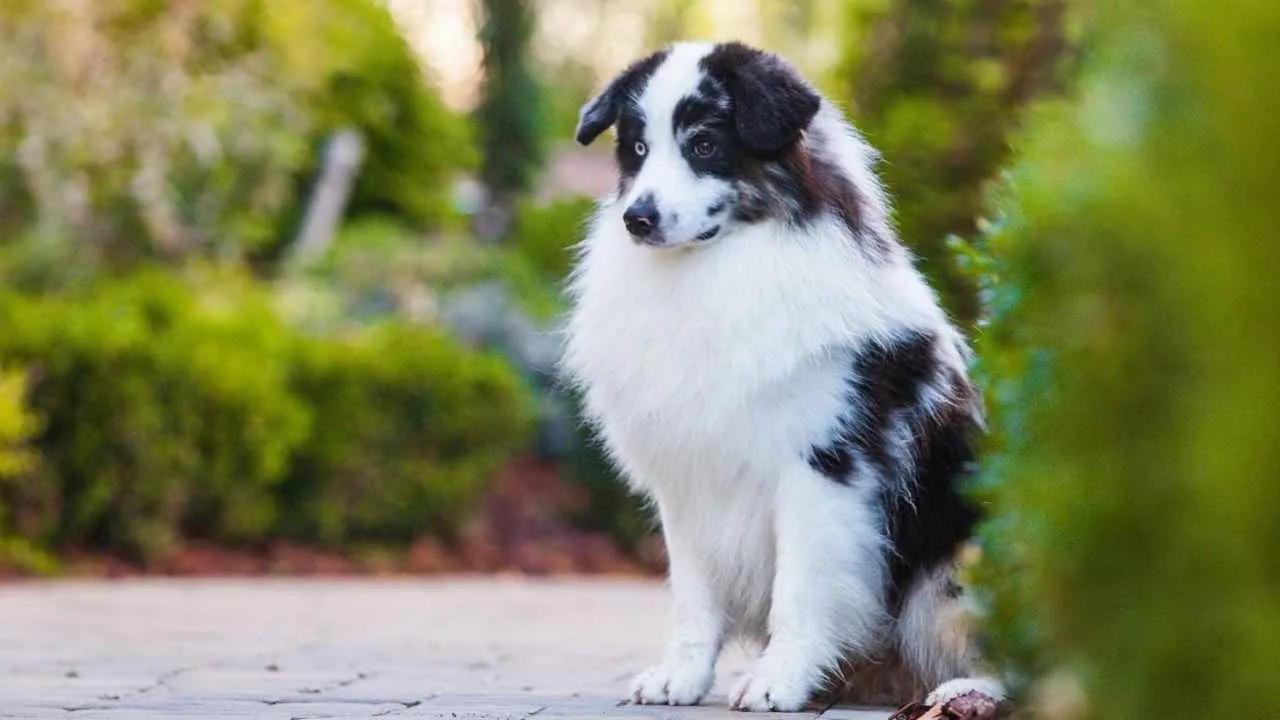
Meet the Miniature American Shepherd—basically the Australian Shepherd’s cooler, travel-sized sibling who still thinks they’re the CEO of herding. This pint-sized powerhouse is full of smarts, speed, and sass, ready to herd anything from sheep to your runaway socks.
Miniature Shepherds are classified as small herding dogs, with males generally a bit larger than females. Males typically stand between 14 and 18 inches tall at the shoulder, while females range from 13 to 17 inches. Their healthy weight usually falls between 20 and 40 pounds.
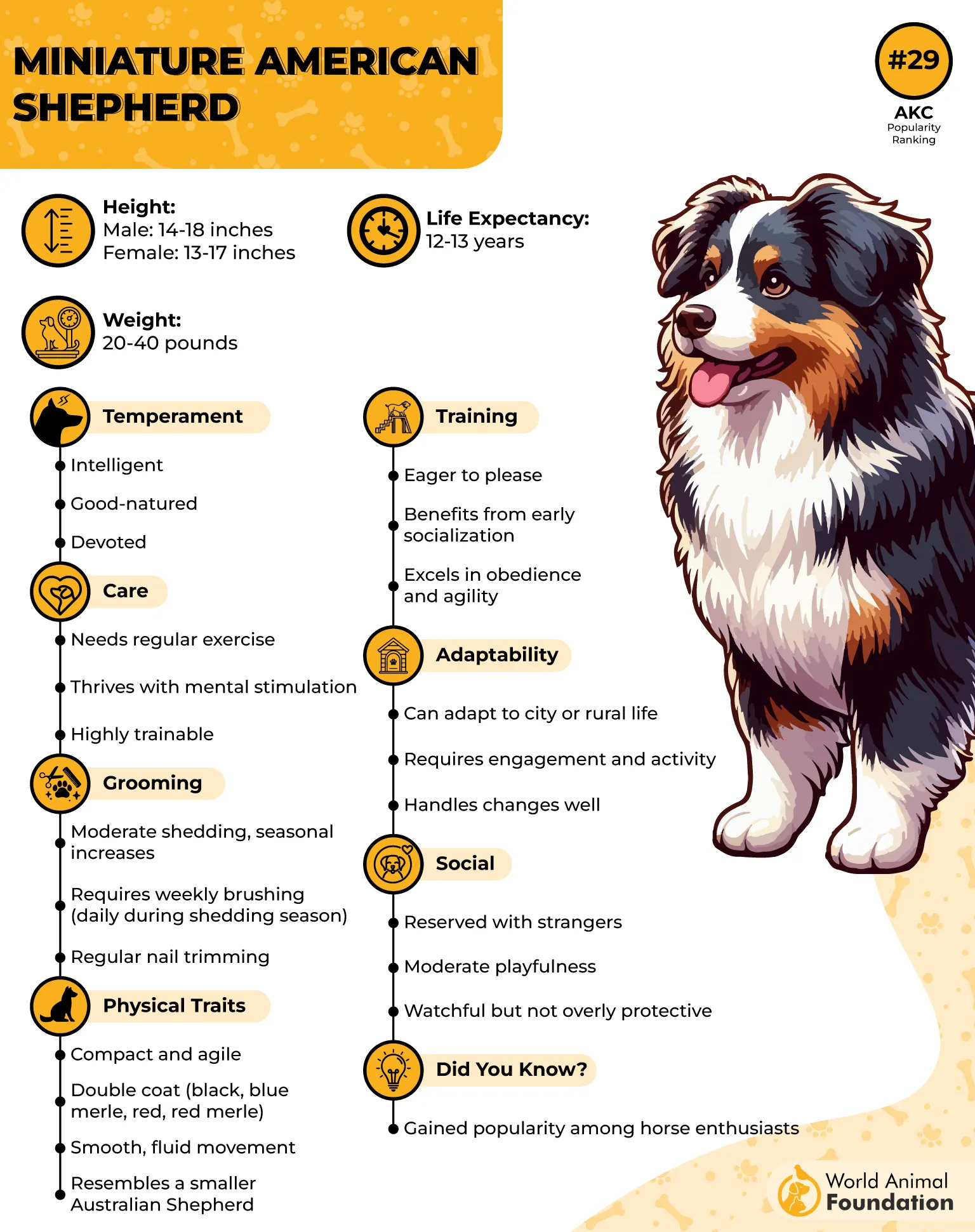
As per WebMD, this breed is an excellent companion for hiking and camping adventures. They absolutely love spending time outdoors, so if you’re someone who’s always eager to get outside, they might just be the perfect addition to your family.
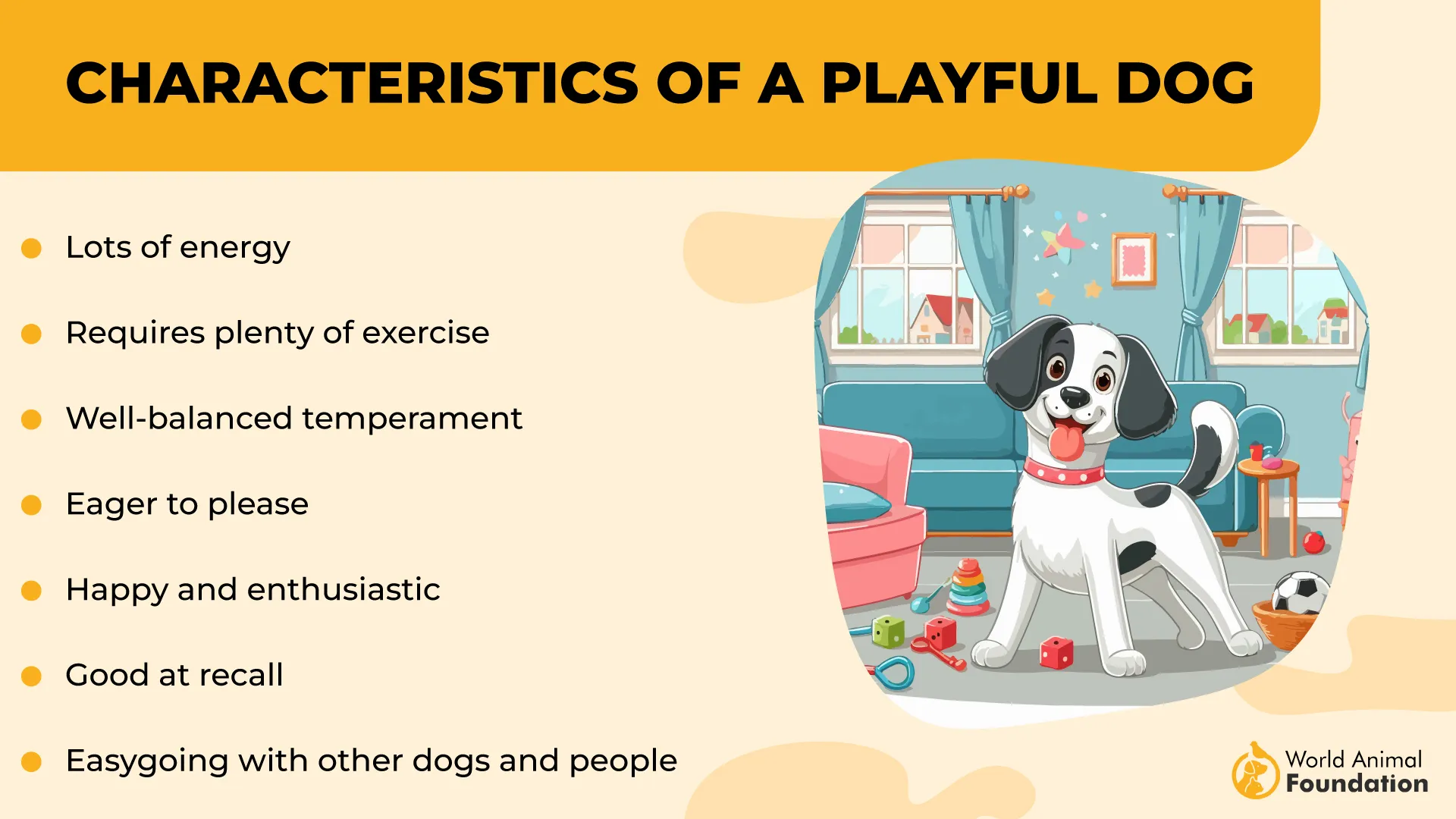
Despite their “mini” label, these dogs have energy levels that rival a double espresso. They’re quick learners, eager workers, and super loyal—kind of like that coworker who’s always five steps ahead but also brings snacks.
If you live in a small space, don’t worry—this breed adapts well, but they will need plenty of mental and physical exercise. Otherwise, they might invent new ways to keep themselves entertained, and trust us, “redecorating” your living room isn’t always fun.
Friendly with family, alert around strangers, and always up for a game or a cuddle, the Miniature Shepherd is basically your new best friend—just with more herding instincts and fewer coffee breaks.
9. Spanish Water Dog
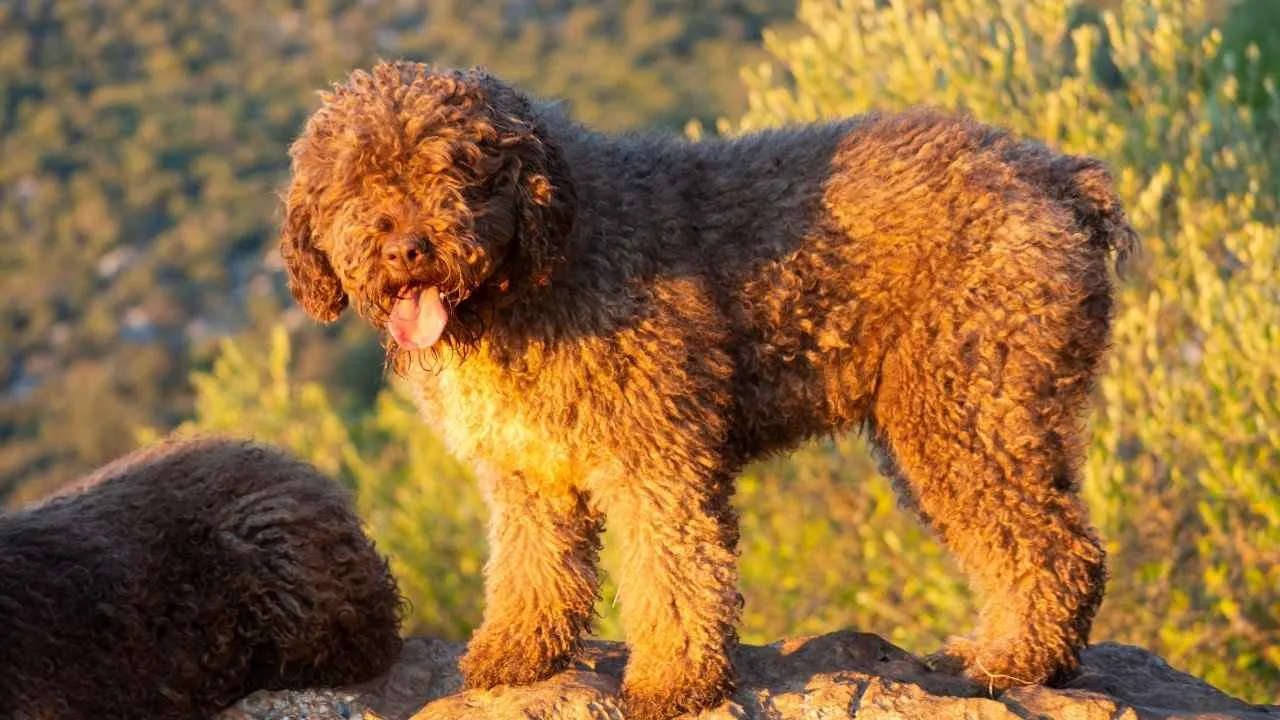
Imagine a dog that looks like a fluffy mop but moves like an Olympic athlete. That’s the Spanish Water Dog—a curly-coated marvel originally bred for herding sheep and retrieving from water. They’re the Swiss Army knives of dogs: versatile, smart, and a little bit wild.
The Spanish Water Dog, or Perro de Agua Español, has long been a reliable companion across the Spanish countryside. This breed boasts a rich heritage as a versatile working dog, skilled as a herding and hunting dog, and assisting people with fishing tasks.
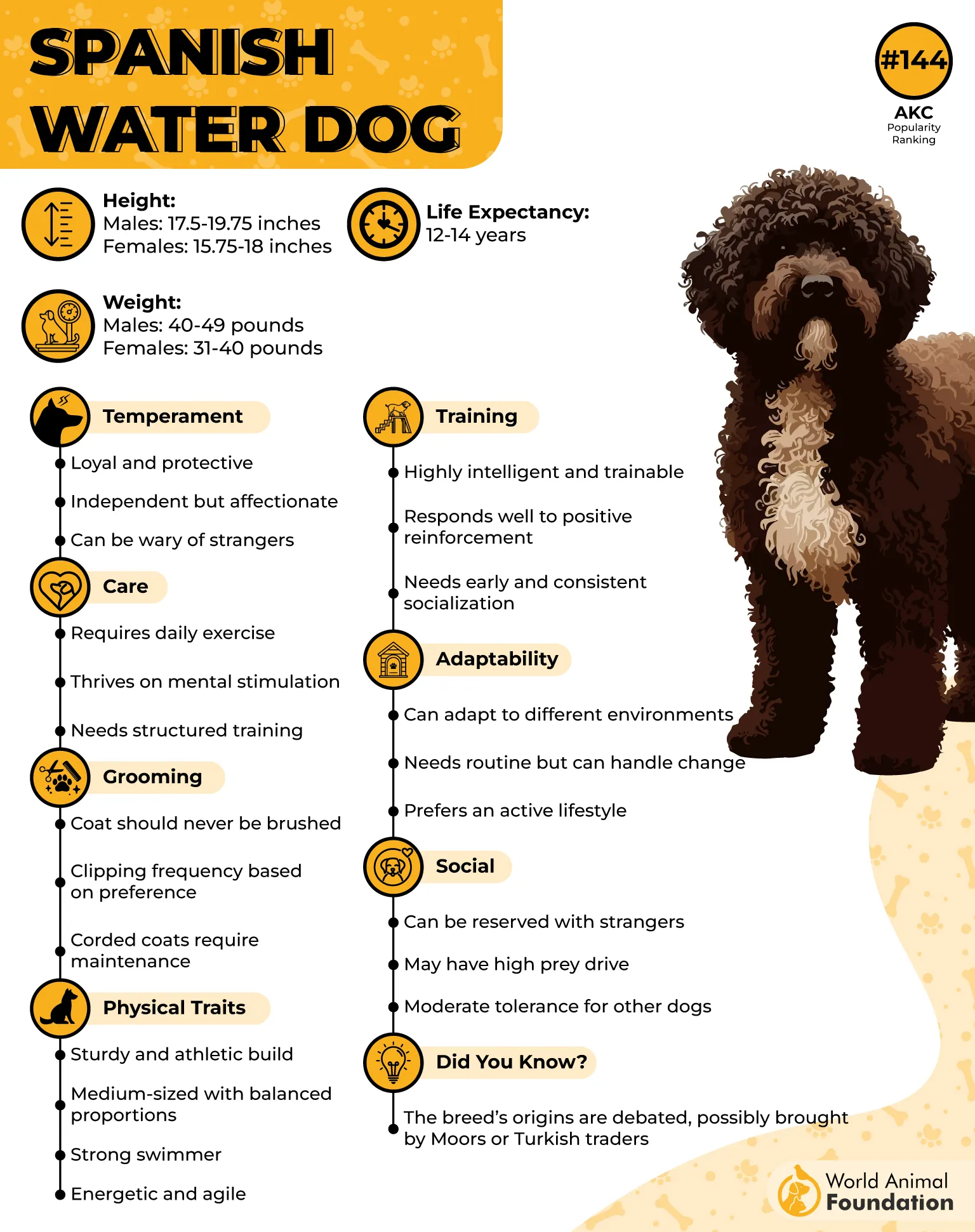
Their curly, woolly coat isn’t just for show—it’s weatherproof, meaning these pups can handle swimming, hiking, and whatever else you throw their way without breaking a sweat (or a curl).
Spanish Water Dogs are fiercely loyal and tend to bond deeply with their humans, so deeply, in fact, that you might feel like you’ve adopted a four-legged shadow with a wet nose. They’re spirited, vocal, and love a good challenge, whether it’s a tricky puzzle toy or keeping the family entertained with their goofy antics.
Before welcoming a Spanish Water Dog puppy into your home, it’s essential to understand the best environment and care they need. This breed flourishes in settings where they receive plenty of mental and physical exercise, such as obedience training and swimming sessions.
Pro tip: Don’t brush the coat too much—those curls like to keep their shape. And don’t be surprised if your “mop” suddenly starts herding your kids, the cat, or even the neighbor’s garden gnome.
Conclusion
Modern dog breeds reflect centuries of purposeful development, adapting to diverse tasks and lifestyles. From hairless dogs like the American Hairless Terrier to wiry-coated breeds like the Wirehaired Vizsla and Cesky Terrier, variety defines today’s canine companions. Many breeds, such as the Toy Fox Terrier, Boykin Spaniel, Black Russian Terrier, and Treeing Walker Coonhound, are officially recognized by the AKC, including newer additions and ancient breeds like the Tibetan Mastiff and Arabian Greyhound.
Some, like the Grand Basset Griffon Vendéen, Petit Basset Griffon Vendéen, and Polish Lowland Sheepdog, serve as excellent herding sheep or working dogs, while others, like the Jack Russell Terrier, Parson Russell Terrier, and Dogo Argentino, were developed to hunt wild boar and other animals. Sled dogs, Entlebucher Mountain Dogs, and Icelandic Sheepdogs show how breeds evolved in colder regions like the Pyrenees Mountains. Though each is its own breed, many are closely related and part of the herding group, working dog, or hound categories. Whether you’re drawn to a popular breed or exploring new dog breeds, these furry friends remain a vital link to our past and future.


